There’s a circular route around Uganda on the website bikepacking.com, which I intended to (roughly) follow during my time in the country. Following this route, the distance to the town of Lira was just over 160km. I decided to try and complete my first dirty century, 100 miles (160 km) on unpaved surfaces.
The dirt began as soon as I left Kumi – but then the tarmac returned after a few hundred metres. The road alternated a few times between dirt and tarmac a few times and I thought my attempt was going to be over before it started but, after a couple kilometres, the tarmac ended for good.
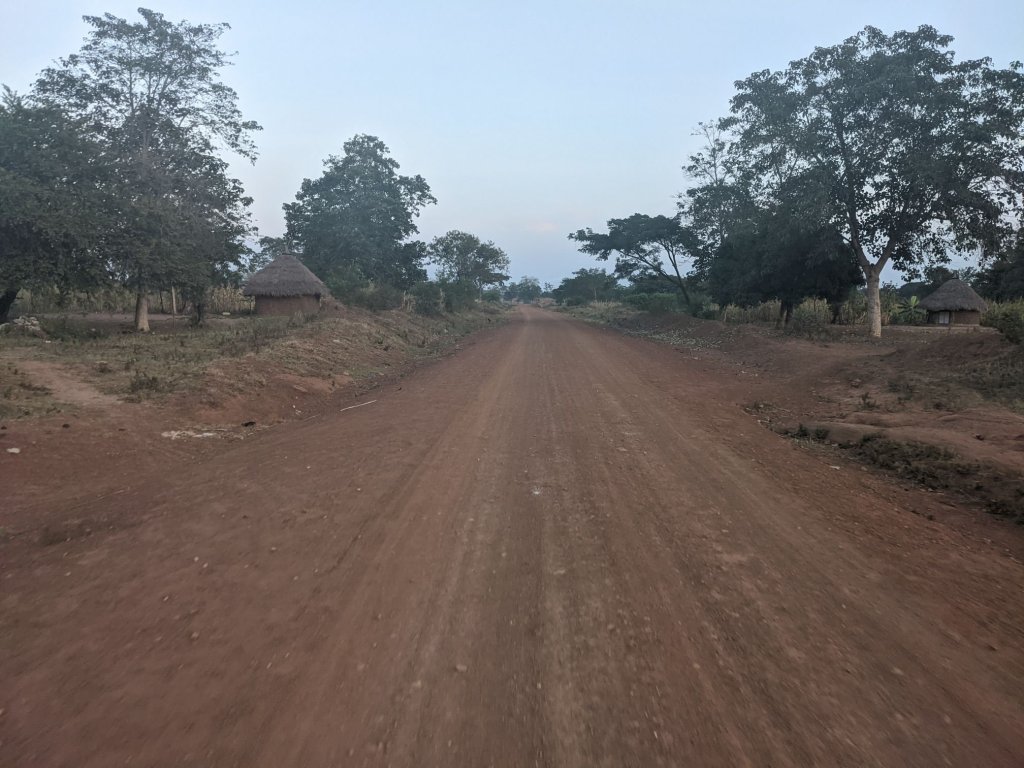
Initially I rode along fairly smooth dirt roads. After a few kilometres, I realised I’d missed a turn I should have taken, and took a turn to get to the track I should have been on.

When I got to where the route said I should go, there was no path there. I ended up following a series of single track paths trying to just head in the right direction.


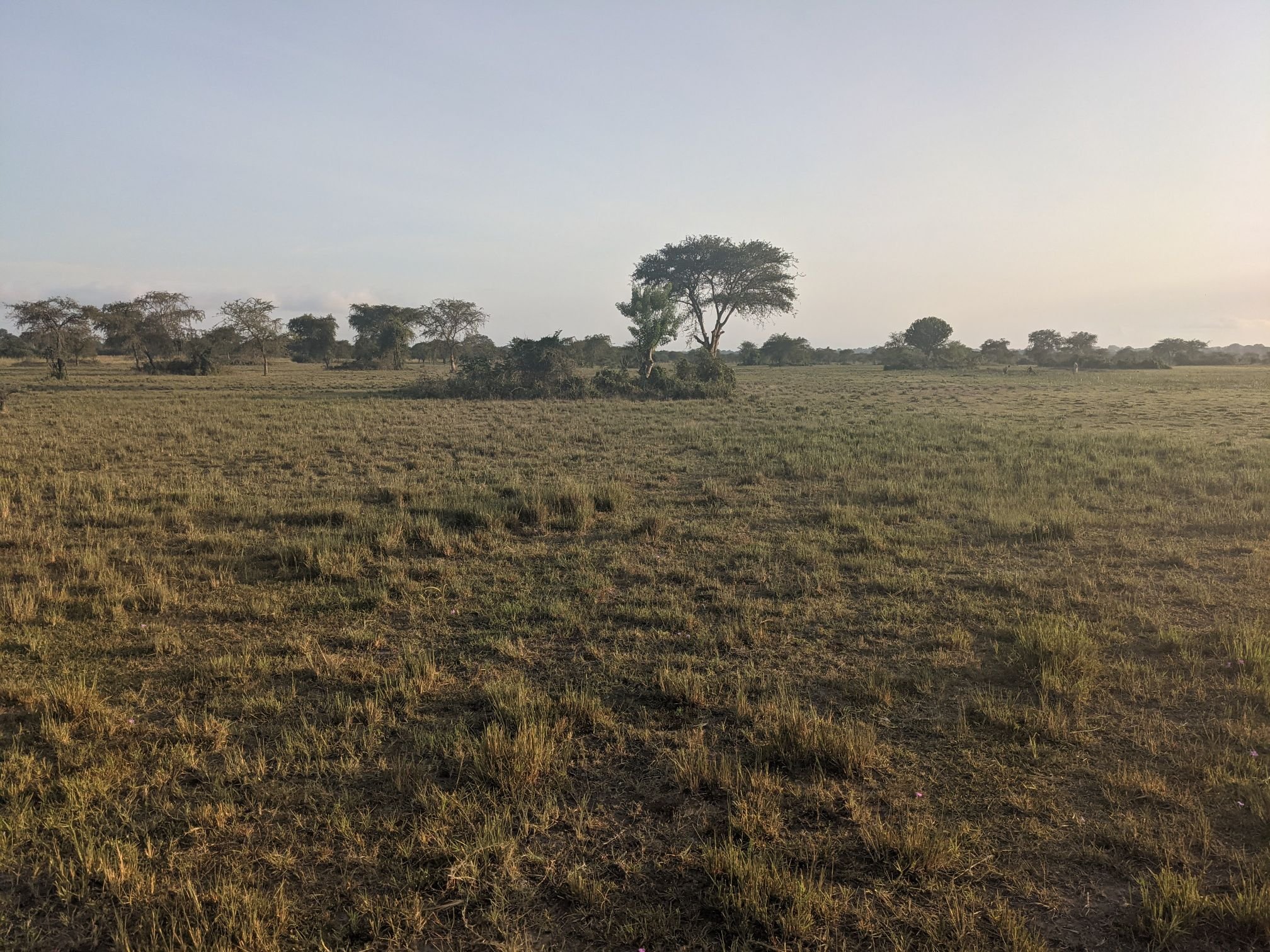
After riding across a field of grass with no path, I decided to give up on the route for now and headed down a dry river bank for a while then followed some tracks marked on my map. After a while I reached a point where the bikepacking route existed again.

I rode along smooth roads for a while until I reached a railroad track, then rode along that. At times the path sloped at quite a steep angle and it felt a bit sketchy.

A few kilometres along this track, I reached a problem: a missing bridge. There was a fisherman nearby in a canoe and I got him to take me across – bike first, then me. The canoe seemed quite unstable and if it rocked just a couple centimeters more I would have ended up very wet!


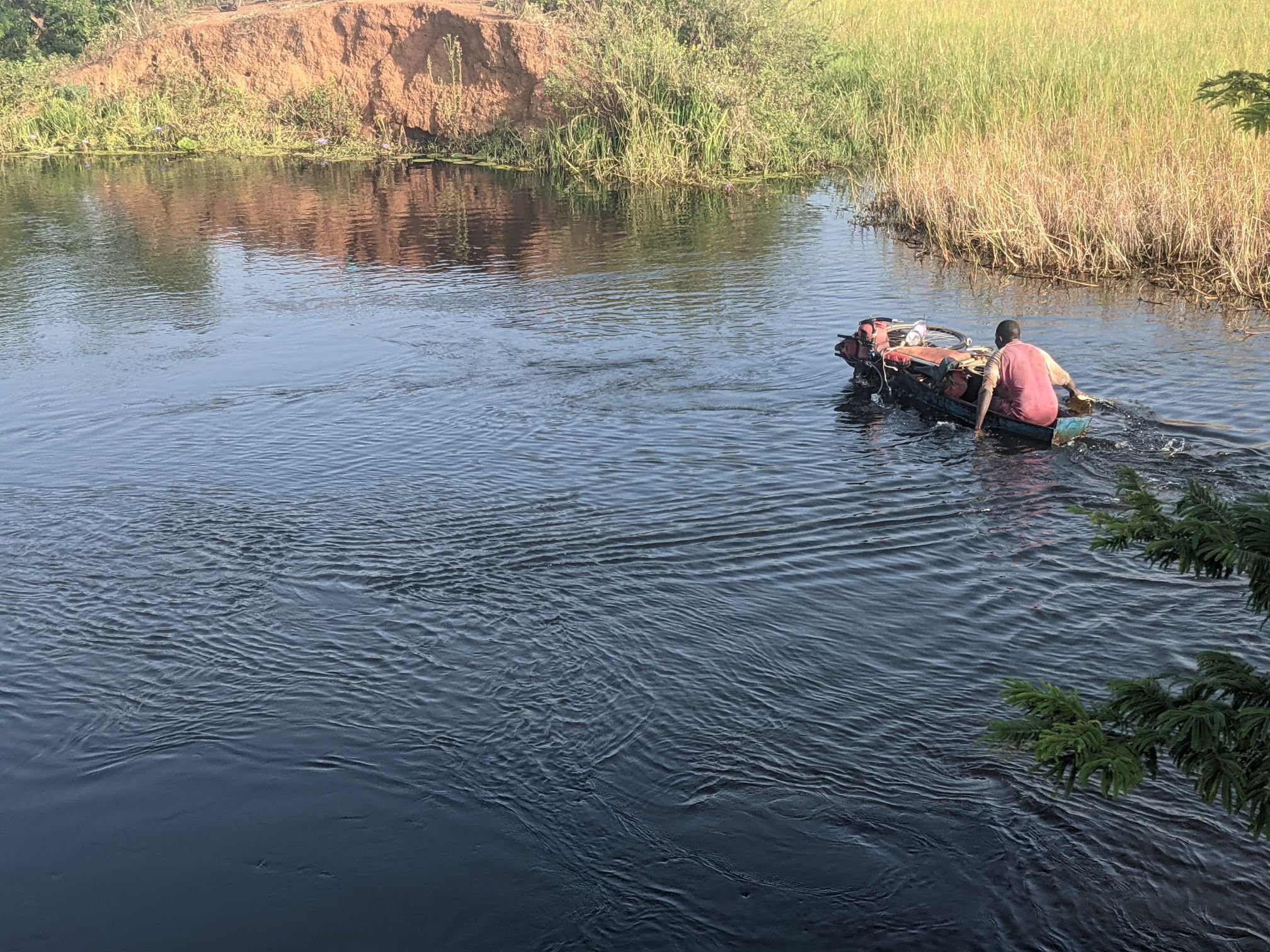

There was another missing bridge just a couple kilometres along, and another fisherman who helped me cross.

Once the railroad returned to a dirt road, a long stretch of smooth riding followed. There was then one more stretch of singletrack riding through some fields as I made my way round some villages.

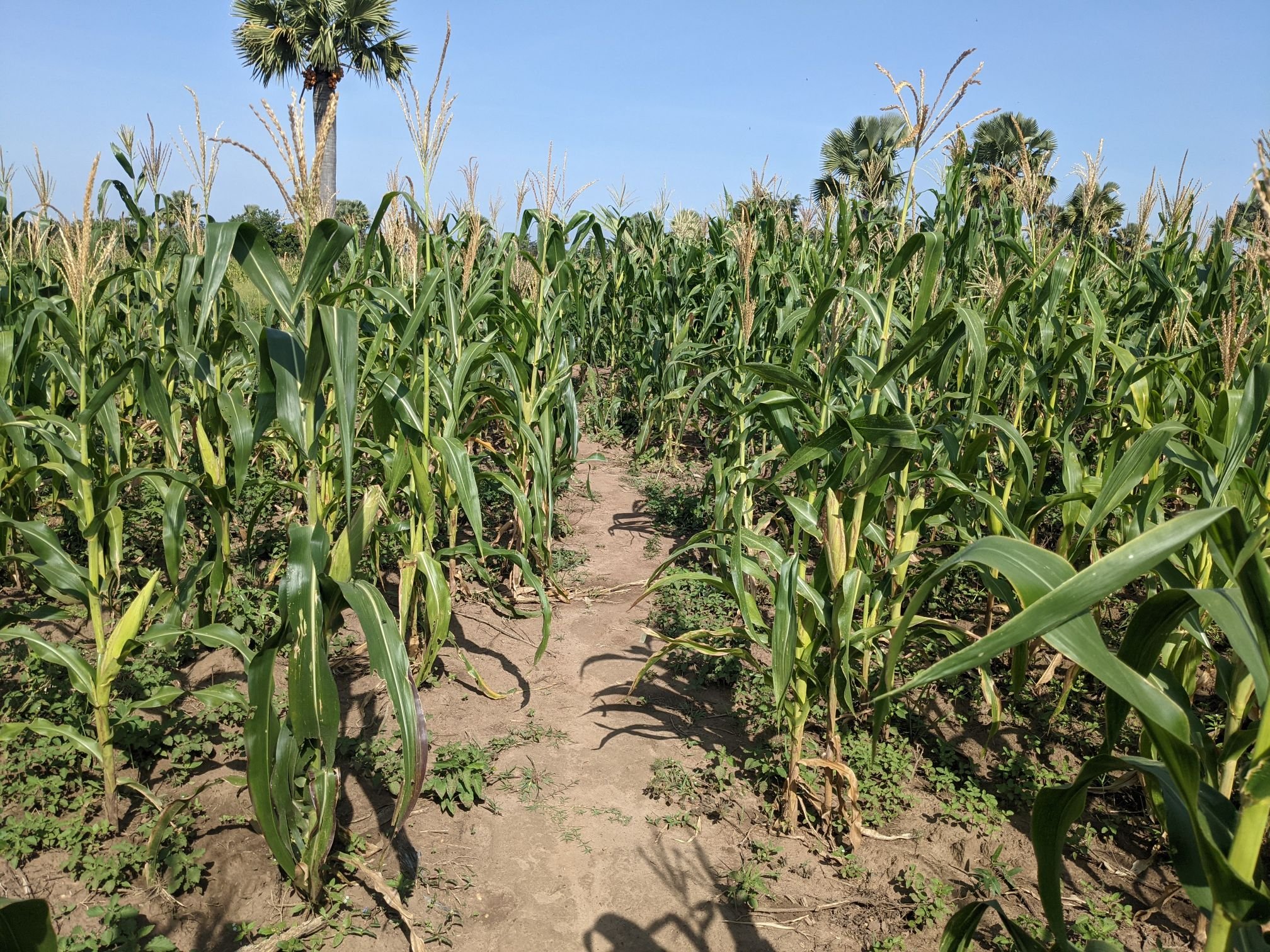


The rest of the day was much less uneventful as I rode along smooth dirt roads. It was a bit more populated but there were still lots of empty, quiet stretches.


Even when there were people around, I was very pleased to discover that Ugandans seem much more reserved than their Kenyan neighbours. People would smile and wave, but shouting was much more rare.
As an introvert, I found the omnipresent shouting of Kenya to be draining, and it left me uninterested in any longer conversations with people. Here, though, I was being mostly left alone while riding, so I was happy to chat to people when I stopped. At one point, while stopped for a break, I chatted to a guy called David. He works at a local clinic, and spoke about how their local government has a “triangle” idea – where each person should have three things: home, work, and a project. His project was trying to grow some rice and watermelons in his spare time. It was really nice to be able to enjoy these encounters again – I was really liking Uganda.
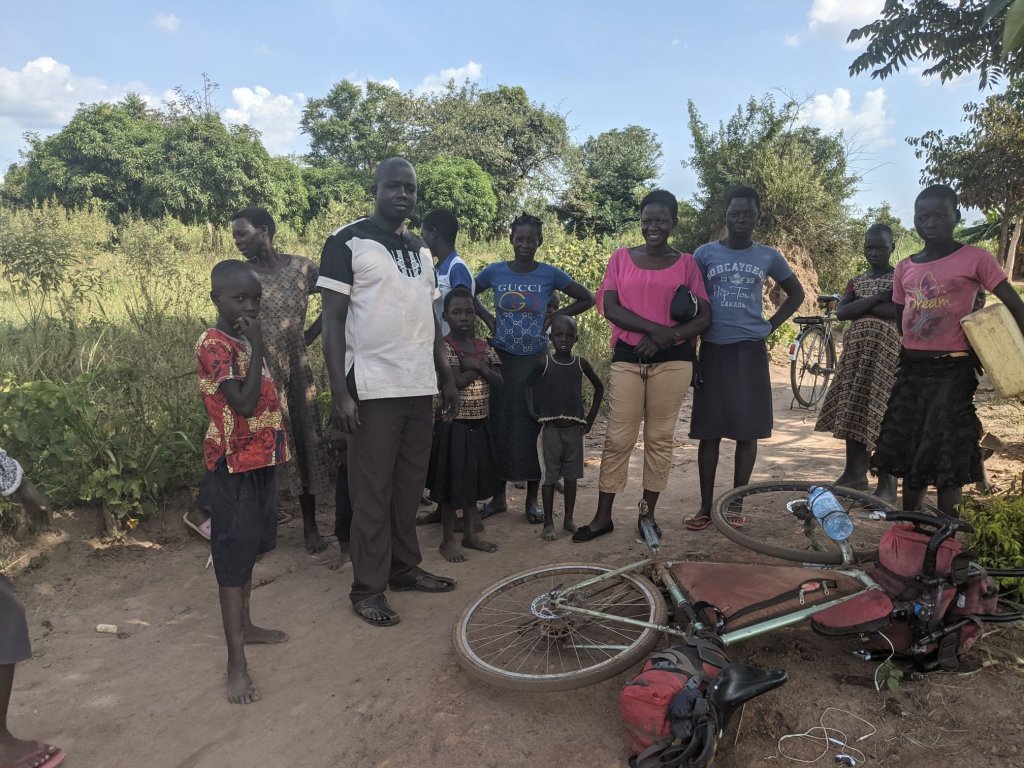
I was about 15km from Lira, my goal for the day, when I heard thunder in the distance. I picked up the pace, wanting to avoid getting covered in mud if it began to rain. Dark clouds blew in, the wind picked up, and it began to rain gently. I was also slightly worried the tarmac would restart a few kilometres before the town, and I would just miss out on my dirty century. Thankfully the dirt persisted, and so I was successful!
I managed to make it into town before it got any heavier. I checked into a hotel and for 25,000 shillings (£5), I got a room with a fan and a shower, two luxuries I haven’t had for some time. Lira is the northern point of my Ugandan detour, so from now on I’ll be back heading generally southwards.
As soon as I left Lira in the morning it was back to dirt roads. Initially they were quite busy, though they did eventually get quieter. Mostly the surface was alright but there were some wet and muddy sections from last night’s rain.


While stopped for a break, a few people watched – but much more quietly and from a further distance. One woman living nearby brought me a chair to sit on. I gave her a cookie which she accepted with something approaching reverence. A young girl, about 5 years old, approached me for a closer look. I looked up from my food, smiled and said hello. She screamed and ran away, wailing. I’d showered just the night before!
The dirt roads were mostly good, a bit bumpier than the day before but still decent. At one point, though, the condition deteriorated, and the road went in a completely different direction to what the map indicated. It looked like it was going to go south, and join another road heading west – instead of going directly southwest as my map showed. I decided to just stick to this relatively big road rather than try and follow more direct singletrack.
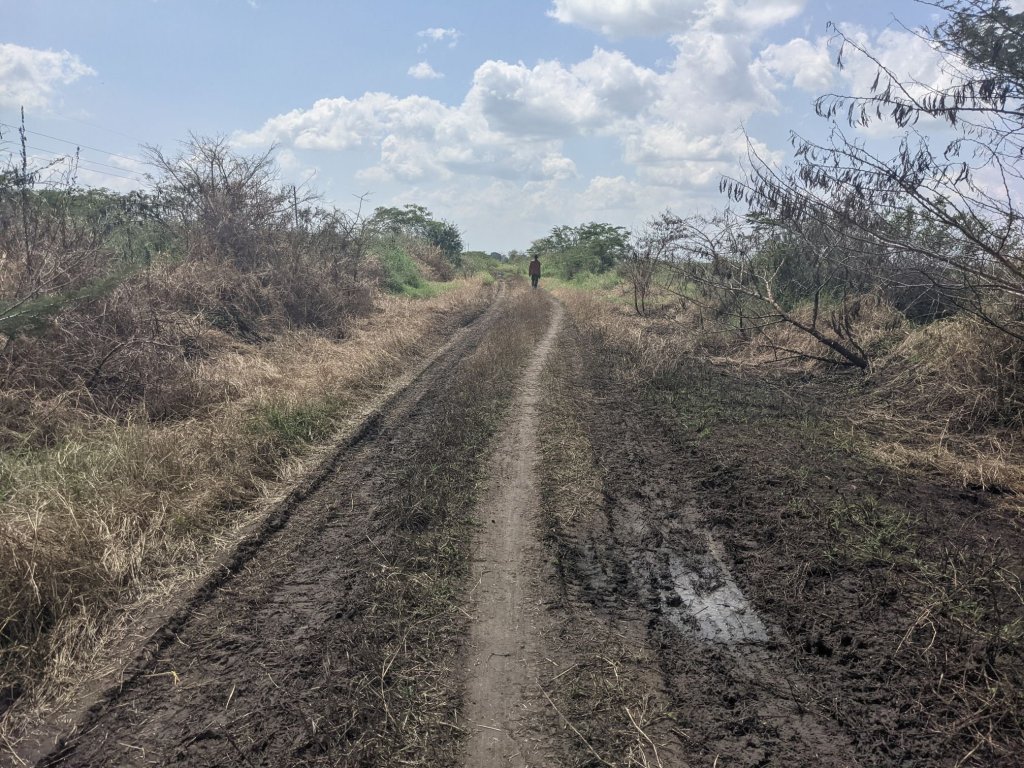
Sure enough I did make it to that road heading west. It was still dirt but construction was ongoing, seemingly turning it into a multi lane highway.

A little way further I reached a river: the Nile! It’s been many thousands of kilometres and I’m still on the same river.
There was a ferry across which was free, though they took down my details in a ledger. Most of the questions were normal – name, age, nationality. Then “What is the name of your bicycle?”
That was an unusual one. “Err, you can call it John,” I said.
“No, what is the brand?”
“Oh. It’s Kona.”
“Corona?” He started writing it down.
“No! Kona, K-O-N-A.” I didn’t want people saying I was riding around Africa bringing Corona with me!
I was quite lucky with the timing as they were just finishing a 2 hour lunch break. I chatted with a friendly policeman during the 15 minute or so wait, then we crossed.
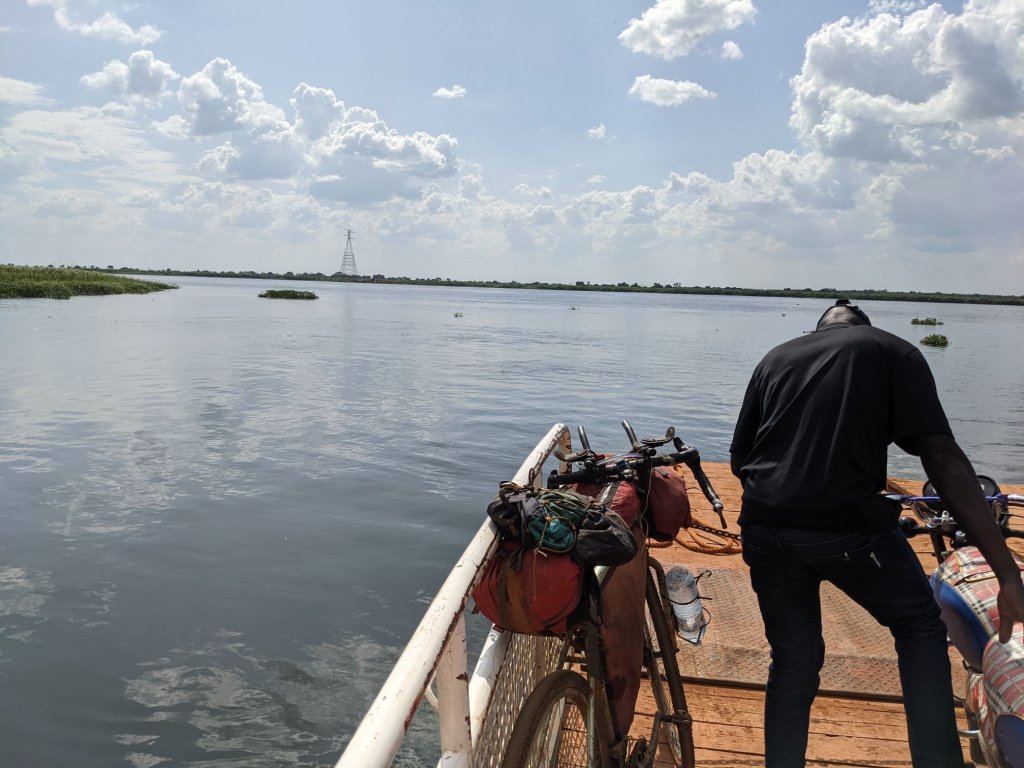
From the ferry it was another 45km to the town of Masindi, on some of the smoothest and quietest roads of the day. After 170km of riding, I reached the town and checked into a hotel. This one was more expensive (£8!) and had a hot shower.

There’d just been a couple kilometres of tarmac in the middle so this worked out as my second dirty century in a row. I figured that meant I’d earned a rest day, and so I took one.
There was music playing both nights, but I was able to get to sleep easily enough. The second morning, though, I woke up at about 4 AM and the music was much louder; I couldn’t get back to sleep. I decided to just make an early start. I packed up slowly and was on the road about half an hour before first light.
The bikepacking.com route took a big detour to ride a forest trail. From what I’d found online, the trail was no longer being maintained and much of it was impassable. I decided to stick to the road instead. In contrast to the relatively flat last couple of days, steep rolling hills were the order of the day.

I took one short dirt detour just after the town of Haima. The hills were even steeper and the surface was rough. One of my bottle cages snapped – that’s an issue with carrying them on the fork as I do.
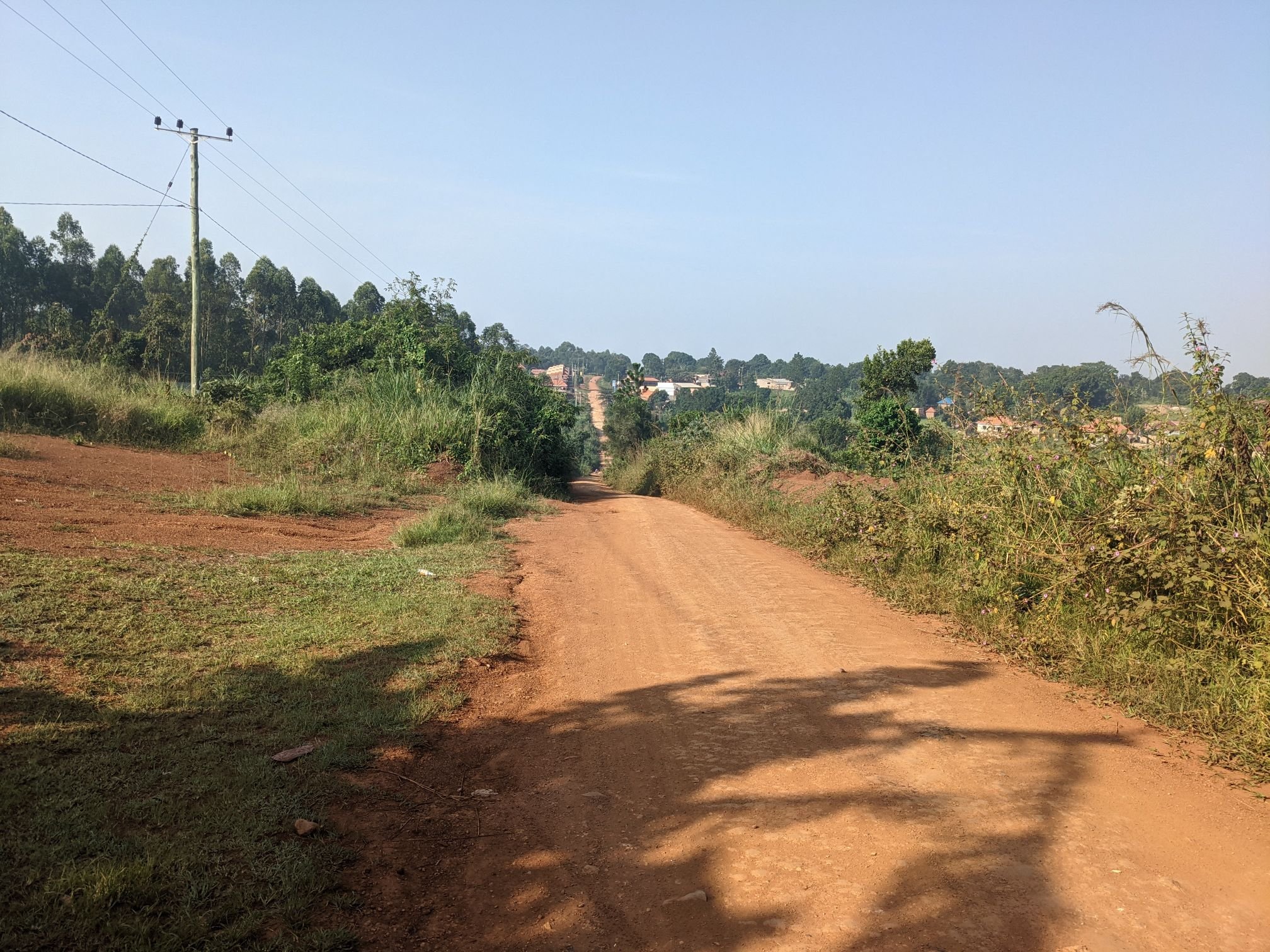
After about 15 km I was back on tarmac. The rest of the day passed fairly uneventfully. There was an interesting looking church in Kagadi – it looked more like a prison.

After a couple hundred metre descent then climb, I reached a small village that had been my goal for the day. I checked into a hotel for 15,000 UGS (£3). It wasn’t the nicest place but it had a mosquito net so it was good enough for me.

Nov 21: 164 km
Nov 22: 170 km
Nov 24: 170 km
Uganda appears very interesting. Quite strange how there seems to be such different behavior upon encountering a foreigner in two neighbouring countries as Kenya and Uganda are, despite their proximity to each other. Overall looks like a beautiful country.
Congrats for the dirt centuries! Happy to see some proper African off-roading. Pretty sure the vast network of dirt roads and singletrack would make for truly awesome riding. It does take its toll on the gear, though, but I reckon it was all worth a broken bottle cage :).
Perhaps suggesting an update to the route description on bikepacking.com would be appropriate, based on your experience on the river crossings? Or at least give a strong recommendation for “bring your own packraft” if the fishermen happened to be on their day off :D.
LikeLike
Yeah the change in attitude changes a lot, even within a country.
I’ve taken your suggestion and posted a comment on l bikepacking.com. Thanks for the idea!
Sam
LikeLike